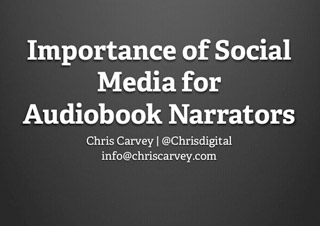 This month of June got quite the kick off, as my friend Robin Miles asked me to head down to the Jacob Javitz Convention Center to participate in a speaking panel. This panel was a feature for a crowd of audiobook narrators as part of the annual Audio Publishers Association/Book Expo America event titled “The State of Audio Book Narration.” As she elaborated on the details, she felt the discussion needed an added twist. That’s where I came in.
This month of June got quite the kick off, as my friend Robin Miles asked me to head down to the Jacob Javitz Convention Center to participate in a speaking panel. This panel was a feature for a crowd of audiobook narrators as part of the annual Audio Publishers Association/Book Expo America event titled “The State of Audio Book Narration.” As she elaborated on the details, she felt the discussion needed an added twist. That’s where I came in.
The panel already had a noted list of industry professionals booked (listed below) and since she had particular concerns about social media, mainly that her members could benefit from some of the “geekery” floating around in my head- she pitched the idea that I should share some of our conversations about the Web with the larger group. I’m glad she did, because I accepted and had a great time.
In preparing my remarks I collaborated with the other panelists about what would best help the group. Robin and John McElroy (our moderator) were particularly helpful in shaping the conversation. Since I was a guest to this community I wanted to be a team player and “help the ball club win.” So after some back and forth, then some last minute tweaks- I was satisfied we had something that was a basis for good conversation. (See slide link below.)
Slides And Goals
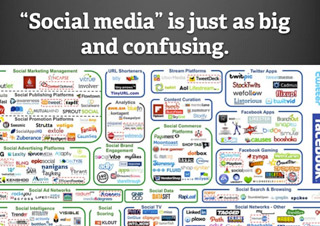 My slides are posted here on slideshare.net. My goals were short and sweet, and goes a little something like this…
My slides are posted here on slideshare.net. My goals were short and sweet, and goes a little something like this…
1. Communicate the importance of the Web in current American/International culture.
See slide #2 which discusses this in particular, and if you’re interested in the source of some of these assertions- Check out Mary Meeker’s Latest Stunning Presentation About The State Of The Web.
2. Stress the current trends of buying and hiring decisions were being influenced by Internet searches and social media. Those interested should check this out: New Revelations on Facebook, Background Screening, and Privacy.
3. Lay down some rules of the road for setting up your online “persona.”
See slide #3, I make references to “Me 2.0, Revised and Updated Edition: 4 Steps to Building Your Future by Dan Schawbel.”
4. Offer some basic marketing tips. These are disbursed all over the presentation, so click through to get an idea. In addition, “The Thank you Economy” by Gary Vaynerchuk has an interesting take on strategy as it relates to social media.
5. Talk about the paradox of old-school business methods working hand-in-hand with modern day networking. See slide #6 which offers some bullet points of what I mean.
The Take-Aways
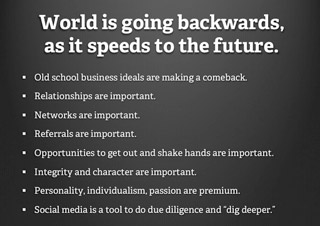 The Q&A was lively, the crowd was really into it, and I learned quite a bit about their industry by being there. They also really appreciated my presentation and the “on the fly” commentary on the two case studies I included. I want to give a shout out to Simon Vance that was gratified I thought he was doing several things right.
The Q&A was lively, the crowd was really into it, and I learned quite a bit about their industry by being there. They also really appreciated my presentation and the “on the fly” commentary on the two case studies I included. I want to give a shout out to Simon Vance that was gratified I thought he was doing several things right.
I think for a lot of attendees, I de-mystified the social media/marketing process when I told them to focus on the target audience they are trying to reach and come up with a manageable plan. Absence of a plan, especially in “social media” will mean you’re at the mercy of whatever Google can scrape off the Internet to tell a story about you. Even worse if you not “searchable” at all you will lose business to others.
In addition, I stressed trying to “talk” to their users and people they are marketing to, watch their page traffic. Get a sense of how they are perceived, and what their audience is asking of them so they can be more responsive.
There were some really great conversations after the panel. One of my favorites was with a gentleman that was quite annoyed that he had to actively participate in some form of self-promotion, which tickled me quite a bit. So I turned his mock anger on it’s head with this series of questions…
“Are there people in the industry that make you life easier? …Make you feel comfortable in the booth? …Perhaps you want to work with again? Maybe you want to talk about that?”
“I’m sure you’ll get a lot of mileage out of that, and give people a behind the scenes look of how you work. In addition, your colleagues will appreciate the positive feedback, and this will give you a bit of a theme and strategy to your social media postings.”
I saw a lightbulb go on over his head.
The Biggest Lesson
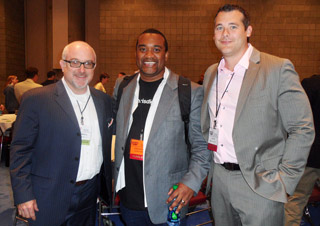 The biggest lesson I tried to convey was: Be an active participant in developing your online brand. Think of others first, and how they can benefit from your posts, (e.g. tips you can share, your unique knowledge on a subject matter), and this will make you shine in the end possibly bringing you more work.
The biggest lesson I tried to convey was: Be an active participant in developing your online brand. Think of others first, and how they can benefit from your posts, (e.g. tips you can share, your unique knowledge on a subject matter), and this will make you shine in the end possibly bringing you more work.
For me personally, this event was awesome. Once we got warmed up the panel really got flowing and we provided great benefit to the assembled group. I especially made a concerted effort to emphasize other panelists points and I got a lot out of it learning the nuances of another industry. Although I deal with clients with varying degrees of tech-savvy-ness all the time, it’s important to remember not everybody is “wired in” to Web-related strategy as I try to be. It was really fun talking to the attendees during the Q&A and afterwards. I will definitely do it again. Someone even came up to me and asked if I was interested in addressing a group of SAG actors :-)
The Noted Panelists:
 John McElroy (our moderator) is President and Executive Producer of Eljin Productions, Inc. In the audiobook industry since the early 1990s, he has produced and abridged hundreds of programs. He has won three Grammy Awards and has been nominated for two others. In 2002 he was co-recipient of the Audio Publishers Association Hero Award for his work with Stephen King on the Wavedancer Foundation. He continues to serve on the board of The Haven Foundation, the successor to Wavedancer.
John McElroy (our moderator) is President and Executive Producer of Eljin Productions, Inc. In the audiobook industry since the early 1990s, he has produced and abridged hundreds of programs. He has won three Grammy Awards and has been nominated for two others. In 2002 he was co-recipient of the Audio Publishers Association Hero Award for his work with Stephen King on the Wavedancer Foundation. He continues to serve on the board of The Haven Foundation, the successor to Wavedancer.
 Dan Zitt is the Director of Audio Production at Random House Inc. In his sixteen-year career, he has produced well over two thousand audiobooks, and he currently oversees production teams in New York and Los Angeles that produces over four hundred audiobook titles a year. His team’s productions have garnered Audies, Grammys, and Odyssey Award winners. Most recently he recorded First Lady Michele Obama for her audiobook, American Grown.
Dan Zitt is the Director of Audio Production at Random House Inc. In his sixteen-year career, he has produced well over two thousand audiobooks, and he currently oversees production teams in New York and Los Angeles that produces over four hundred audiobook titles a year. His team’s productions have garnered Audies, Grammys, and Odyssey Award winners. Most recently he recorded First Lady Michele Obama for her audiobook, American Grown.
 Tavia Gilbert is a multiple Audie nominee and Earphones and Parent’s Choice Award-winning producer, narrator, and writer Tavia Gilbert has appeared on stage and in film. School Library Journal has called the performances of this highly-acclaimed actress “as close as you can get to a full cast narration with a solo voice.” She has narrated nearly 150 multi-cast and solo voice audiobooks.
Tavia Gilbert is a multiple Audie nominee and Earphones and Parent’s Choice Award-winning producer, narrator, and writer Tavia Gilbert has appeared on stage and in film. School Library Journal has called the performances of this highly-acclaimed actress “as close as you can get to a full cast narration with a solo voice.” She has narrated nearly 150 multi-cast and solo voice audiobooks.
Christopher Carvey you can read about me here.
Special Thanks
 Special thanks to Robin Miles (our facilitator.) Here’s a little about her… Robin began narrating audiobooks at American Foundation for the Blind’s Talking Books Studio in 1994 and now boasts over 200 titles covering many different genres. She is a regular narrator for several different commercial audiobook producers, and in addition to fiction, autobiography, sociology and children’s titles, Robin has recorded an exhibit for the Museum of Natural History in NYC, led sexual harassment training on the Internet, imparted New York’s legal codes for disabled lawyers, and she continues to provide dubbing and dialogue for dozens of feature films and television shows.
Special thanks to Robin Miles (our facilitator.) Here’s a little about her… Robin began narrating audiobooks at American Foundation for the Blind’s Talking Books Studio in 1994 and now boasts over 200 titles covering many different genres. She is a regular narrator for several different commercial audiobook producers, and in addition to fiction, autobiography, sociology and children’s titles, Robin has recorded an exhibit for the Museum of Natural History in NYC, led sexual harassment training on the Internet, imparted New York’s legal codes for disabled lawyers, and she continues to provide dubbing and dialogue for dozens of feature films and television shows.
The Books
Here are some of the books I reference in the slides or mentioned in the Q&A:
Me 2.0, Revised and Updated Edition: 4 Steps to Building Your Future by Dan Schawbel
[From Book Description] There is no job security anymore, which means that the way we manage our careers has forever changed. Now, everyone in the world is your competition and the single greatest differentiator you have is your personal brand. With social media tools, blogs, and mobile applications, there are endless opportunities to become known and connect with other people.
In Me 2.0, personal branding expert Dan Schawbel gives you all the tools you need for building a powerful personal brand that WILL give you a competitive advantage in the marketplace, including:
· A 4-step process for discovering, creating, communicating and maintaining your personal brand.
· How to use all the latest social media tools, including video, blogs, and social networks for job search and career development.
· The secrets to networking effectively – both online and offline.
· Proven branding advice from industry experts and insiders.
Whether you’re looking for your first big job, want to climb the corporate ladder, or are eager to jumpstart your own business venture, Me 2.0 will help you achieve lasting success!
The Zen of Social Media Marketing (2012 Edition) by Shama Hyder Kabani
[From Book Description] Social media is a crucial tool for success in business today. People are already talking about your business using social media, whether you’re using it or not. By becoming part of the conversation, you can start connecting directly to your customers, as well as finding new ones, easily and inexpensively spreading the word about your products or services.
But social media marketing isn’t like traditional marketing—and treating it that way only leads to frustration. Let Shama Hyder Kabani, social media expert and president of web marketing firm The Marketing Zen Group, teach you the “zen” of social media marketing: how to access all the benefits of social media marketing without the stress!
With a foreword by New York Times bestselling author Chris Brogan, The Zen of Social Media Marketing outlines the most popular social media tools, from Facebook to Twitter to LinkedIn, and teaches you how to use them, step by step. Kabani provides proven strategies for success from the businesses she works with every day, along with shortcuts and tips to help you make the most of your time and energy.
The Thank you Economy by GaryVaynerchuk
[From Book Description] Here renowned entrepreneur Gary Vaynerchuk reveals how companies big and small can scale that kind of personal, one-on-one attention to their entire customer base, no matter how large, using the same social media platforms that carry consumer word of mouth. The Thank You Economy offers compelling, data-driven evidence that we have entered into an entirely new business era, one in which the companies that see the biggest returns won’t be the ones that can throw the most money at an advertising campaign, but will be those that can prove they care about their customers more than anyone else. The businesses and brands that harness the word-of-mouth power from social media, those that can shift their culture to be more customer-aware and fan-friendly, will pull away from the pack and profit in today’s markets.
Extra Credit
Trust Agents: Using the Web to Build Influence, Improve Reputation, and Earn Trust by Chris Brogan and Julien Smith
[From Book Description] Today’s online influencers are Web natives who trade in trust, reputation, and relationships, using social media to accrue the influence that builds up or brings down businesses online. In Trust Agents, two social media veterans show you how to tap into the power of social networks to build your brand’s influence, reputation, and, of course, profits.
In this revised paperback version, learn how businesses are using the latest online social tools to build networks of influence and how you can use those networks to positively impact your business. Combining high-level theory and practical actions, this guide delivers actionable steps and case studies that show how social media can positively impact your business.
Enchantment: The Art of Changing Hearts, Minds, and Actions by Guy Kawasaki
[From Book Description] Enchantment, as defined by bestselling business guru Guy Kawasaki, is not about manipulating people. It transforms situations and relationships. It converts hostility into civility and civility into affinity. It changes the skeptics and cynics into the believers and the undecided into the loyal. Enchantment can happen during a retail transaction, a high-level corporate negotiation, or a Facebook update. And when done right, it’s more powerful than traditional persuasion, influence, or marketing techniques.
Kawasaki argues that in business and personal interactions, your goal is not merely to get what you want but to bring about a voluntary, enduring, and delightful change in other people. By enlisting their own goals and desires, by being likable and trustworthy, and by framing a cause that others can embrace, you can change hearts, minds, and actions.
Contact Me
Reach out to me if you’d like me to talk to your group :-)






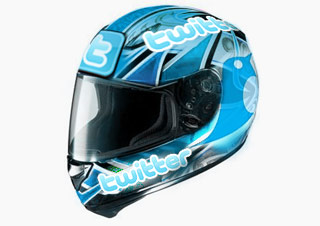 I was like most people when I first heard about Twitter; I didn’t get it and I was dismissive. I said things like, “Oh, this is like
I was like most people when I first heard about Twitter; I didn’t get it and I was dismissive. I said things like, “Oh, this is like